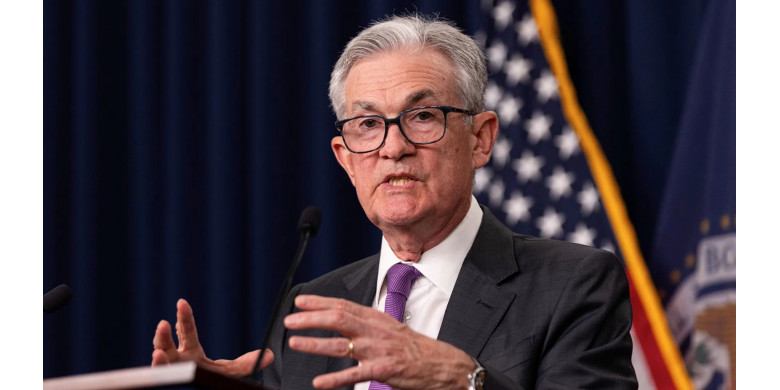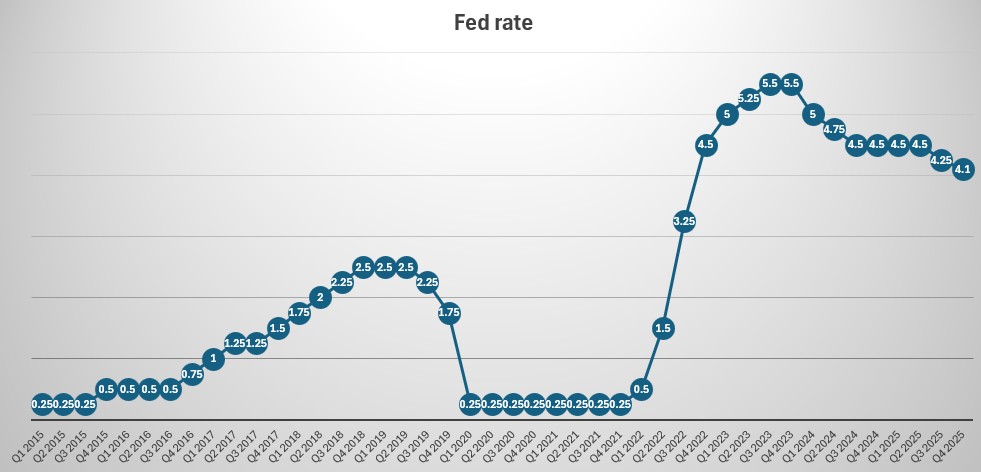As we approach the end of 2025, the Federal Reserve's monetary policy decisions are under intense scrutiny. With the federal funds rate currently set at 4.1%, following a 0.25 percentage point cut in September, markets are anticipating further rate reductions. Here's an overview of what we know, the possibility of a double rate cut, and how it could impact the markets.

As of October 27, 2025, the Federal Reserve's benchmark interest rate, the federal funds rate, is set at 4.1%. This follows a 0.25 percentage point reduction implemented on September 16, 2025, marking the first rate cut since December 2024.
Current Federal Funds Rate and Upcoming Meeting
The Federal Reserve's key interest rate stands at 4.1%, following a September reduction that marked the first cut since December 2024. The Federal Open Market Committee (FOMC) is set to meet on October 28-29, 2025, at the Federal Reserve's headquarters in Washington, D.C. This meeting is crucial, as policymakers, led by Fed Chair Jerome Powell, are expected to deliberate on further rate cuts.
Possibility of a Double Rate Cut
The Federal Reserve has signaled the potential for two more 0.25 percentage point cuts by the end of the year. Financial analysts widely expect one cut to occur during the October meeting, bringing the rate to 3.85%, with the second likely to follow in December. This projection aligns with forecasts from institutions like Nomura, which predict that the Fed is on track to lower the rate to a range of 3.5% to 3.75% by year-end.
Why a Double Rate Cut?
Several factors are pushing the Fed toward further easing of monetary policy:
Easing Inflation: Inflation remains elevated at 2.9%, slightly above the Fed’s 2% target, but recent data indicates a gradual decline. The Consumer Price Index (CPI) rose by 3% year-over-year in September, below the forecast of 3.1%. Similarly, "core" inflation, excluding food and energy prices, dropped to 3% from 3.1% in August, signaling a downward trend.
Weakening Labor Market: While unemployment remains low, job growth has slowed, and the Fed is prioritizing efforts to stimulate the labor market. Rate cuts are seen as a tool to boost hiring and economic activity.
Economic Growth Concerns: While real GDP has shown steady growth, momentum appears to be moderating. The Fed is likely aiming to prevent a more pronounced economic slowdown.
Global Economic Risks: Broader global uncertainties, including geopolitical tensions and weaker international demand, could influence the Fed’s decision to adopt a more accommodative stance.

Chances of a Double Rate Cut
The likelihood of a double rate cut is high, with market indicators and the Fed’s own projections reinforcing this expectation. The CME Group's FedWatch tool, which analyzes fed funds futures trading, suggests near certainty of a 0.25 percentage point cut in October, with a strong possibility of another in December. These cuts would bring the federal funds rate down to approximately 3.5% to 3.75%, aligning with the Fed’s quarterly projections.
Market Implications
Historically, rate cuts have a significant impact on financial markets. Here’s how a double rate cut could play out:
Equity Markets: Lower interest rates reduce borrowing costs for businesses, potentially boosting corporate profits. This often leads to a rally in stock markets, as investors anticipate improved financial performance across sectors.
Bond Markets: A rate cut lowers yields on fixed-income securities, such as government bonds. This could increase demand for equities as investors seek higher returns.
Consumer Spending and Investment: Lower borrowing costs encourage consumer spending and business investment, stimulating economic activity.
Currency Markets: A lower federal funds rate may weaken the U.S. dollar, making U.S. exports more competitive globally and potentially boosting trade.
Risks and Considerations
While a double rate cut is likely to support economic growth and boost market confidence, there are risks. Persistently high inflation or a worsening of global economic conditions could complicate the Fed's strategy. Additionally, lower interest rates may reduce returns for savers and fixed-income investors.
Conclusion
The Federal Reserve appears poised to implement a double rate cut by the end of 2025, with the first reduction likely to occur at the October 28-29 FOMC meeting. This move is driven by easing inflation, a softening labor market, and concerns over slowing economic growth. Markets are already pricing in these cuts, with equity markets likely to benefit from increased optimism and lower financing costs.
As the Fed navigates these delicate economic conditions, its decisions will have far-reaching implications—both for the U.S. economy and global financial markets. The prospect of a double rate cut underscores the Fed’s commitment to fostering economic stability and growth, even as it balances inflationary pressures.
Caution
Trading and investing involve substantial risk and may not be suitable for every investor. You could lose some or all of your initial investment. Past performance does not guarantee future results.
High Risk Disclosure
Some financial instruments discussed here are highly speculative and may result in total loss of capital. Neither BearGain nor the author are responsible for any actions taken based on this article.
Related Articles

Palantir Technologies: The Data Intelligence Giant Reshaping...
In the rapidly evolving landscape of big data and artificial intelligence, few companies have generated as much intrigue...

🦅 What Is a “Trump Trade” — And Why It’s Back (But Differen...
The term “Trump trade” first appeared in late 2016, right after Donald Trump won the U.S. presidential election.

Inflation, Deflation, and Shrinkflation: Key Economic Concep...
Inflation, deflation, and shrinkflation are vital economic concepts that shape our daily lives.
Leave a Comment
Comments Policy
All comments are posted upon approval of the admin. We reserve the right to moderate or remove comments that violate our community guidelines.